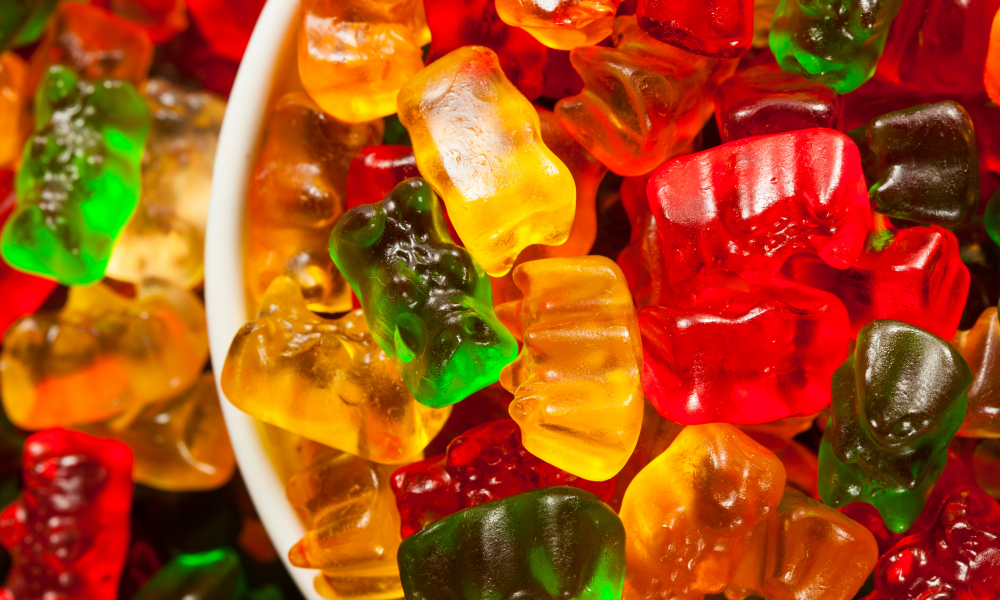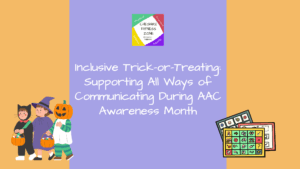Bite Size Nutrition Series
As caregivers, we always want to make sure we are feeding our children healthy food with the best ingredients. In our Bite Size Nutrition Blog Series, we will focus on different topics for caregivers regarding nutrition for children. Occupational Therapist Bianca Lane will add her insight throughout.
A Closer Look Into Red Dye 40
You may have heard about additives and artificial food coloring and dyes in food. But do you know how common it is?
Red Dye 40 is a food coloring in thousands of food products, cosmetics, and even some medication. In this blog, we will explain what Red Dye 40 is, what products it’s found in, its potential impacts, and how to avoid artificial dyes.
What is Red Dye 40?
Red Dye 40 is a popular food coloring that is used in a variety of products, including foods, candy, soda, and even some medications. It is a synthetic dye that is derived from petroleum and is used to give foods a bright, red color.
While Red Dye 40 is approved by the FDA for use in food, there is some controversy surrounding its safety.
Some studies have suggested that Red Dye 40 may be linked to hyperactivity and behavioral problems in children. While the evidence is not conclusive, many parents are concerned about the potential risks associated with consuming this food coloring.
Red Dye 40 is just one of the common artificial dyes that can be found in food and other products.
Red Dye 40 is currently 1 of 9 color additives certified by the FDA.
The others are:
Blue No. 1
Blue No. 2
Green No. 3
Orange B
Citrus Red No. 2
Red No. 3
Yellow No. 5
Yellow No. 6
Red dye 40, Yellow No.5, and Yellow No. 8 makeup about 90% of food dyes used in the United States.
Potential Concerns of Red Dye 40
One issue with Red Dye 40 is that it can cause allergic reactions in some people. Studies have shown that it may cause hives, itching, and other allergic symptoms in some individuals.
Another concern is Red Dye 40 potential link to hyperactivity and behavioral problems in children. Although not conclusive, some studies suggest a link.
As a result, some food companies have started to remove Red Dye 40 from their products or offer alternatives that are free from artificial colors and flavors.
Don’t Just Look for Red Dye!
One problem is that some people suspect only brightly colored, red food to contain Red Dye 40.
However, this dye is used in various products that could be overlooked, because Red Dye 40 does not always appear red.
This artificial food coloring hides in many processed grocery items, including:
Sodas and other soft drinks
Condiments
Puddings
Dairy products (ice cream, sherbet, flavored milks, frozen yogurt)
Baked goods
Chocolate candy and confections
Fruit juices
Fruit gummy snacks
Occupational Therapist, Bianca Lane:
“Many of kids’ favorite snacks and foods include artificial dyes, but thankfully more options with natural, plant-based coloring are becoming widely available in popular stores and online”
It's Not Just In Food
Label checking for Red Dye 40 does not stop at food items. Several medications and vitamins contain Red Dye 40 as well.
Always check the ingredients label of the food, medication, and even cosmetics items you’re purchasing if you want to consciously limit your exposure to Red Dye 40 and other color additives.
If you are concerned about certain medications containing artificial dyes such as Red Dye 40, always consult your doctor that can discuss ingredients further.
Occupational Therapist, Bianca Lane:
“Many common children over the counter medications have ‘dye free’ versions”
Don’t Be Fooled! Red Dye 40 Loves a Good Alias
Unfortunately, it gets a little more confusing. Despite the FDA mandating that synthetic food colorings need to be labeled, they can be listed under an alternative name, making it easier for you to miss while checking the label.
These alternative names include:
FD&C Red No. 40
Allura Red, Red Lake 40
Allura Red AC
Something to Chew On: Europe Adds Warning Labels Regarding Red Dye 40
Another thing to note is that in Europe, certain artificial food colorings such as Red Dye 40, Yellow No. 5, and Yellow No. 6 can be added to products as long as the label includes a warning that says the dyes “may have an adverse effect on activity and attention in children.” These warning labels are not mandated in the United States.
So, What Should I Do?
If you are concerned about the current data surrounding artificial dyes such as Red Dye 40, there are a few things you can do as a caregiver.
The most important thing you can do is check the label of all foods, medications, and cosmetic products you use. Red Dye 40 is oftentimes found in processed foods, so pay close attention to those labels.
Occupational Therapist, Bianca Lane:
“Recipes for red velvet cake with beets can make it just as beautifully red!”
Besides avoiding and limiting foods that contain Red Dye 40, you should be focused on eating a diet that involves whole foods that are naturally colorful. Fruits and vegetables are packed with nutrients and vibrant colors, making them a healthy and colorful alternative to processed foods.
Occupational Therapist, Bianca Lane:
“Some of my favorite brands are Unreal Chocolates, Annie’s Crackers and Mac and Cheese, Yum Earth Gummies and Lollipops (some have Vitamin C too!)”
You should always consult your doctor and the child’s pediatrician prior to making diet changes. Your doctors can consult you on what foods are best for you, and the child’s diet based on personal dietary needs. Your doctors can also provide more information about the potential risks and concerns regarding Red Dye 40.
Key Takeaways
In conclusion, Red Dye 40 is a synthetic food coloring that is used to give foods a brighter color. While it is approved by the FDA for use in food, there is some concern surrounding its safety for consumption.
If you’re concerned about Red Dye 40 and other artificial dyes, it’s important to read labels carefully, choose whole foods, and talk to your child’s doctor. By taking these steps, you can help ensure that your child’s diet is healthy, colorful, and free from artificial food additives.



